Category Archives: Business Thoughts
The Top Tip To Getting Your Book Published – and 13 other things you didn’t know about what it takes
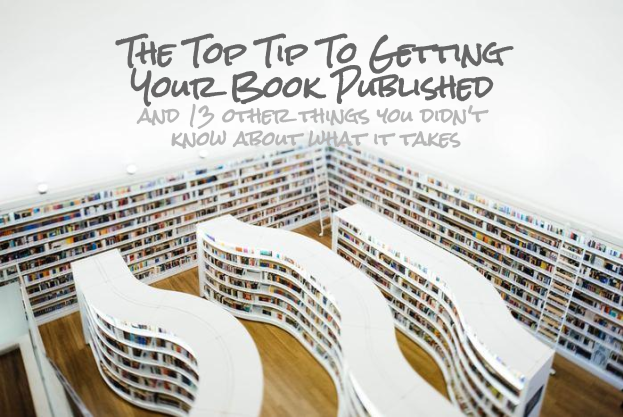
Writing a book is a common bucket list objective.
If you have dreams of seeing your name on the spine of a physical book, you’re not alone.
This past weekend I travelled from Victoria, BC Canada to Orlando, Florida USA to join 300 other attendees at a writers conference.
My objective was to find out: exactly what does it take to get a book published by a major publishing house?
What I learned out is that having a really great idea, or even a magnificent finished book has very little to do with whether or not you get published.
What I learned is not news to me.
I certainly did not need to take three planes across North America to learn that it’s not so much the quality of the end product, but the quality of the business plan and ultimately sale potential that matter most.
It is after all, what I preach loud and long to my small business owner and entrepreneur clients; if you’re in business, you’re in the business of selling.
CEO/Publisher Reid Tracy of Hay House said it at least 15 times over the course of the two day conference.
The most important deciding factor in whether or not your book gets published is the size of your platform.
Your platform means your direct relationship with your community of fans and customers.
Yes, you heard me right.
Getting your physical book published and out in the world is very much dependent on the size of your Facebook and Instagram followers and your email list.
Because of all that reading means to me personally, and the long tradition of storytelling dating back since people drew on cave walls, I guess I was a bit surprised to hear this news.
I really love books. I’ve loved them since I was a kid. I can be found deeply inhaling the pages of fresh new and musty old books alike.
Even though my clients call me things like social media guru (which makes me cringe, honestly), and I am more tech savvy than your average bear, I still prefer physical books to e readers or audio books.
Surrounded by people of all ages, including a few senior citizens, many including me were a bit dismayed to learn: the publishing business is simply another business, and the players exist to make a profit.
I GUESS I THOUGHT THERE WOULD BE MORE EMPHASIS ON WHETHER THE BOOK WAS LIKE, GOOD.
And of course, it does, to an extent.
But given the choice between two similar quality books, the author with the bigger platform wins.
I sat through the online marketing portion of the conference with a wry smile on my face.
The golden rules of online marketing apply to author platforms:
- Have a mobile friendly, search optimized website with clear calls to action.
- Use multimedia like images and videos
- Have a very clear “elevator pitch” ; It should be very clear what problem you solve.
- Gather email addresses by offering something valuable for free
- Build your audience on Facebook and Instagram
Beyond developing your online platform, here are 10 other things I did not know about getting your book published.
- Unsolicited manuscripts sent to publishing houses end up in what’s called the Slush Pile and no one reads them
- The odds of getting published are not good: 80,000 books are published a year and less than 300 will sell more than 50,000 copies of their book
- It’s easier to get non-fiction published and sold than fiction. Unless you have a series, in which case that is more saleable.
- You need to submit a book proposal to get considered. A document that takes most people two months to create.
- You are well advised to get an actual professional editor to help you with your proposal. You can get a really good one for around $4000 USD.
- You may need an agent to help you submit the proposal to publishers (and get it read), but you probably don’t need a publicist. You’re advised to promote yourself.
- The book you write and the one you publish are likely two very different books.
- It takes at least a year, more often two, to go from proposal acceptance to holding the book in your hand.
- Traditional publishing exists because getting your book in stores used to be the only way to sell your book, and publishers were the only ones who could get your book in stores.
- The reasons getting published is an attractive idea is because your publisher takes on some of the risk, and helps you with getting the book out in the world. Then it’s your job to sell it.
- Your publisher will provide you with an advance against future royalties ( about $3-$5 a book ) and provide you with an editor who will help you personally as well as the book.
- Being a published author will not make you any money.
I was told this repeatedly by some of the authors at the conference. They do coaching, speaking, retreats and all kinds of other things to make money. - There are two other ways to get published beyond going the traditional publisher route. Depending on your skills, budget and the amount of time you have, you may want more or less support.
Self publishing:
Upload your word doc and graphic through amazon and boom – you’re a published author! Whether it will sell is another story.
Assisted self publishing:
There are a few places, that for a fee, can provide fee for service editors, cover designers and book marketing people. They can also help you with printing and distribution.
—
Do you have any questions about publishing your book, or building your author platform?
Email me – la@laurelannestark.com and I’m happy to answer your questions and share what I learned.
Struggling to build your platform?
Learn how to succeed at social media marketing in just 17 minutes a day.
Download a free copy of the book here
Just wanna see pics?
Check out photos and videos of the trip on my Instagram
—
The Weird “Hat” Hack That Will Explode Your Blog Post’s Effectiveness.

Watch / Listen to this post instead,
All those hats can get heavy!
Small business owners, on any given day, may find themselves fulfilling duties ranging from CEO to janitor. We wear a lot of “hats”.
And while you’re working your hats off, you may have noticed there aren’t that many folks around you doing the same.  While it may be tempting to demand 5 times more effectiveness from the intern, drivers on your commute and your local barista, it’s not realistic.
While it may be tempting to demand 5 times more effectiveness from the intern, drivers on your commute and your local barista, it’s not realistic.
The good news is, I’m sharing with you what I call The Hat Hack, which will make your blog post (almost) as an effective multitasker as you are.
You’re probably letting your blog posts off the hook way too easily.
Whether it’s a newsletter, blog post or social media post, you know you need to do this kind of online marketing work in order to stay competitive and effectively market yourself online.
And once you’ve completed your blog post, typically speaking we just hit publish, feel the relief for a minute and go back to our busy lives.
I’m here to tell you, if you’re doing that you’re making a mistake and missing out on an opportunity!
I believe your blog post should work (at least) 5 times harder than that…
Each piece of content you create should be repurposed so you have five different online marketing assets with, count em, a total of 15 significant benefits and results.
1.Blog Post On Your Website:
Once you’ve completed your blog post, you’ve got the first piece of content done – woohoo! If well written, your blog post should help establish you as a thought leader, help prospective clients know, like and trust you, help you get better ranking on search engines like Google, and keep your website updated. Four major benefits from one web asset!
1.Video :
As the MOST effective online marketing tool, think about summarizing your blog post in a short video. You can then post thevideo to YouTube, upload to Facebook and share on your website.
Videos are effective because they help audiences remember you and trust you, they’re also more likely to share the video, spend more time on your website and buy from you.
(This ads another 5 benefits to your humble blog post, totalling 9 benefits, so far!)
3.Email:
Your blog post should be sent out via email to at least 5 people. You can send it out with a personal note, or a mass email (assuming you have permission to email your list)
Canadians prefer to receive marketing materials via email newsletter and it’s a great way to stay top-of-mind with associates and clients. That’s two more benefits – totalling 11.
4.Social media:
A good blog post should grab attention with a creative headline and keep attention by providing information people can use, or value in some way.
If your blog post fulfils these these criteria than it should get plenty of shares and comments on social media.
A well written and creative blog post can get more free exposure on social media than a paid ad.
Additionally, every share, comment and like acts as a form of social proof, or implicit endorsement.
If my numbers are right that’s 13 benefits – from just one idea.
5.Images:
In the age of instagram, a visual representation of your blog post is all but a requirement.
Create or source and image you can use as the header for your post, and then it gives you another online asset to share on image-only social sites.
A picture is, after all, worth a thousand words and can help folks remember your content.
Additionally, there are many documented cases of consumers purchasing items after they’ve favorited it on Pinterest – another image heavy social media site.
I’ve shown you exactly how one blog post can become 5 online assets giving you 15 solid benefits.
Now, that’s working your hat off 😉
Click the share button now to spread the love and don’t forget to grab more free resources on my website at www.laurelannestark.com
What do you think of the “hat hack”? Do you think you’ll use it? Share in the comments below.
What my Dad’s Style and your website should have in common

Going to the mall as a young teen with my Dad was absolute torture.
I’d ask him to give me a ride and drop me off at the doors, but he’d always insist on entering the building with me.
I’d spend hours getting ready so I could look exactly like my posse of girlfriends, and my Dad would wear track pants WITH his dress shoes.
In PUBLIC.
I was basically a permanent cringe.
When I’d beg him to wear something else – ANYTHING else – he’d shrug his shoulders, refuse and and say, “well, it works for me”.
“It works for me”
Last week I posted an article warning against letting your website become the online equivalent of an 80’s perm.
But being outdated and unfashionable online is totally fine – on ONE condition – that your website is working for you.
By working for you, I mean that it’s positively contributing to you achieving a specific goal.
Most of my clients tell me they want their websites to help them generate revenue.
If that’s your goal, than there are only a few basics you’ll need from your website.
In the case of your website, think like my dad (trends be darned!) to ensure your website works for you.
My big thumbs can’t click these tiny buttons!
It was 2015, in Nanton Alberta that I predicted you would see a decrease in where your website ranks on Google if you don’t have a mobile friendly website.
This may surprise you, but for the last few years, more people use their smartphones than desktops to navigate the web.
In 2017 the majority of web traffic is mobile.
So, if your website is next to impossible for the majority of people online to use, than it’s not exactly functional, is it?
What do I do next?
What action do you want your website visitors to take next?
Whether you want them to call you, give you their email address or shop online, it should be painfully obvious what the next step is.
All the visual indicators and functionality on each page of your website should lead to this action.
An example:
This is my home page.
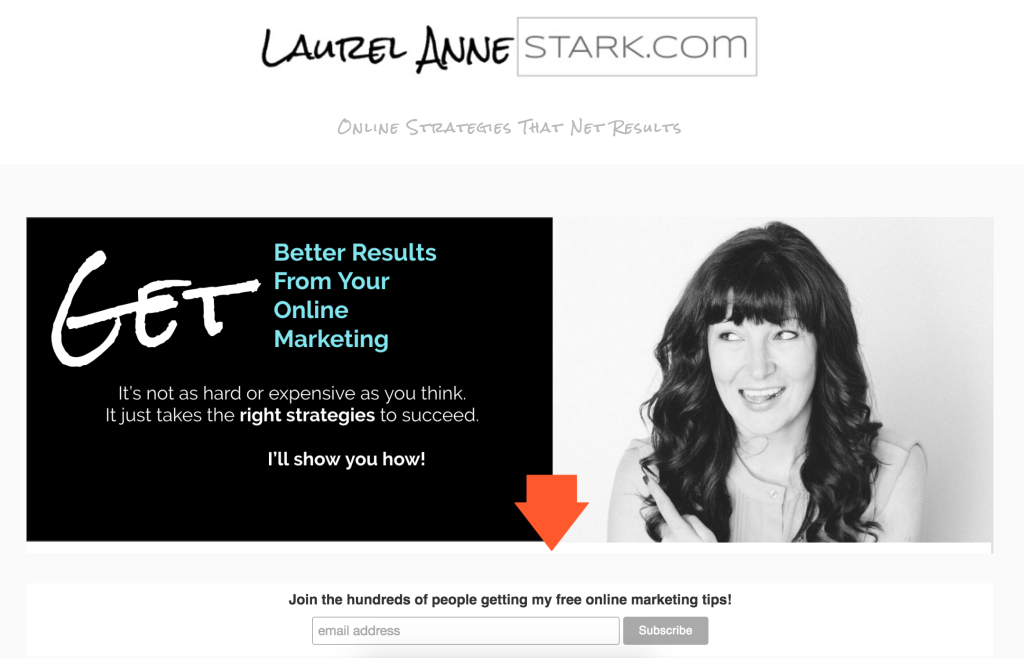
With the funky orange arrow, you can tell exactly what I want you to do.
(Don’t be shy, you can feel free to head on over there and sign up for free online marketing tips)
Another example. Again using orange, you can tell we want you to Try TILOS.
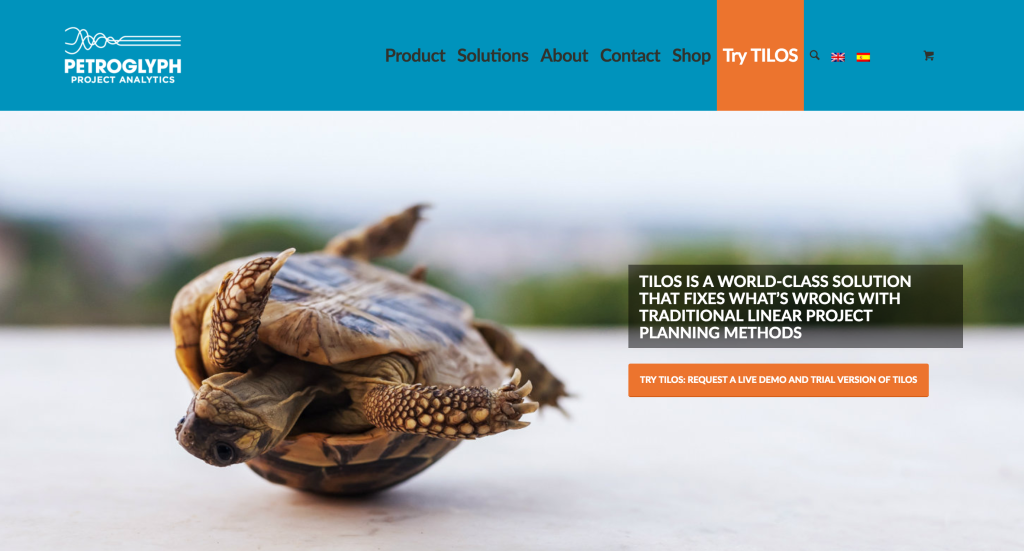
I could go on, but I think you get the point.
Yeah? Prove it!
Sure, your website tells me you’re the best around, but I need you to prove it before I spend.
And I am not alone.
Most customers trust online reviews, or what other people say about you.
Take the time to ask for and collect customer reviews and post them on your website.
Literally, no-one can speak as powerfully to your potential customers as your existing ones.
This is called social proof, a phenomenon I discuss on CNN here.
In Summary:
Whether your website is the crocs with socks style or more haute couture, it should be mobile friendly, have a call to action and social proof.
In my opinion, these are the three most important factors in making sure your website works for you and aides in your sales process and revenue generation objectives.
Sharing is caring!
If you found this valuable (or humourous), don’t be shy, share this with your network.
I’d love to hear your thoughts in the comments below…
Is your Dad more stylish than my Dad?
Did I miss a contender for the top three most important basics for a website in 2017?
What No One Will Tell You About Your Brand New Website
Reading a good book can change your outlook on life.
Philosophically speaking, you may even be a different person than you were before you read the book.
Most of the successful business owners I know are voracious readers, they have coaches and consultants and are in regular attendance at workshops and seminars.
Their growth game is strong.
The continued evolution of their offering, brand, services and approach to business and life has a downside no-one talks about.
Sometimes, you can evolve so fast, the online reflection of your business is outdated as soon as you launch.
Yep. Your website is outdated the minute you launch.
The text, images, wording…call to action, all of it is the product of your reality 3-6 months ago, when you were working to get it launched.
If you’re a perfectionist, or like the feeling of being done, once and for all, or even for this quarter, this can eat away at you.
Whether you change your hair as often as Madonna used to, or you’re committed to providing the best in service you possibly can, you’re going to be out of date.
It’s the side-effect of being an evolving entrepreneur.
And it’s ok!
The web has enabled you to become your own broadcaster – and that’s wonderful.
Just know that it’s iterative. Your website, your headshots, your official bio…all of it.
It’s all progress.
It’s never, ever going to be perfect.
And that’s ok.
Going into your new website development or product design or photo shoot or whatever it is with this knowledge can save you a ton of time and frustration.
It may never, ever, ever feel done, or perfect, or 100%.
But it can be an improvement on the last iteration.
Don’t let great be the enemy of good.
Just launch your website, then refine it.
Launch and refine, launch and refine, launch and refine.
That’s the evolutionary way.
But do continue to evolve your online presence on a somewhat regular basis.
Don’t just give up and settle for the online equivalent of an 80’s perm.
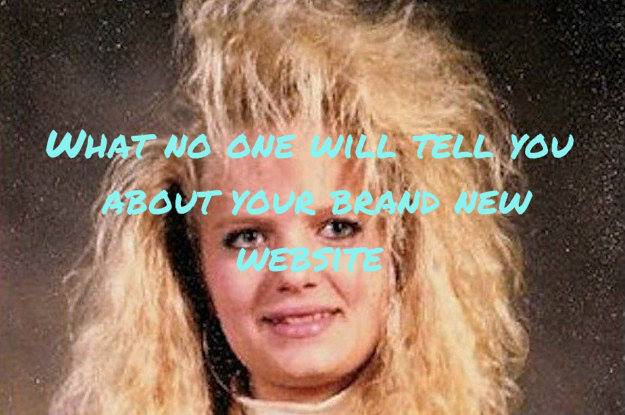
Stop Watching Cat Videos And Start Marketing On Social Media

Scrolling through your Facebook feed while your coffee gets cold isn’t social media marketing.
You’re supposed to be doing something to promote your business online, but all those videos of cats can be awfully distracting.
The next thing you know, 20 minutes of your life has slipped away, and you still haven’t done anything productive.
The scenario I just described is typical for small business owners succumbing to the pressure to get on social media.
The thing is, without a plan of attack, many small business owners don’t get very far online.
Instead they face:
- Overwhelm: all the new, shiny tools!
- Wasted time: mucking about, without a strategy
- A sinking feeling: they’re missing out on a world of opportunity.
The way to be effective on social media is to know your audience.
Imagine you sell cat beds.
Probably, sharing all those cat videos on social media would be a great idea, because your ideal customer likes cats.
That’s an obvious one, but if you can get into the mind of your target market and figure out who they are, you can then create and share content (videos, articles, images) that will be received well.
Content that is well received will:
- Generate likes, comments and shares (increasing your exposure)
- Drive traffic to your website (assuming you provide a link to your site)
- Teach your prospects something (building trust and positioning you as a thought leader)
How do you figure out who your target audience is?
Hint: Here’s a handy video that shows you just how to figure that out, easily.
Take out a pen and paper and imagine your ideal client. Start brainstorming the answers to questions like:
- What keeps them up at night?
- What problem do they want to solve?
- What are their hobbies and interests?
- Where else do they spend money?
- How do they see themselves?
- What do they stand for?
- What media do they consume?
- What are they ready for?
- What questions they ask before they buy what you sell?
The answers to these questions will give you an idea of what’s important to your target, and what types of content they would like to see.
Answer the questions you get asked every day in the form of a blog post.
Think about it.
You get asked the same questions over and over and over.
Obviously, the answers are important to your existing customers, so the odds are good the answers will be important to your prospective customers.
Why not answer that question, in depth in a blog post. This handy video will give you tips on how to get that done more quickly and easily than you thought possible.
A social media strategy that is based on what your target audience cares about is the most effective strategy.
But, knowing your target audience is just the first step
One of my clients said today “I thought going to social media camp I’d learn everything I’d need to know about social media and be done – HA! That didn’t happen”
He’s right.
Successfully marketing your business on social media can be complicated, if you try to figure it all out on your own.
Or you can grab a complimentary copy of my book Social in 17 – how to be successful on social media in just 17 minutes a day.
This is what people are saying about Social in 17:
Really! Social Media can be done in 17 minutes a day. Laurel gives you the structure, the tips, and the ideas. This book is quick and easy to read. She touches on all the major social media platforms but she isn’t short on details. I enjoyed Laurel’s clear and concise style. Well worth my time (and I teach courses on social media). Jeff Nelson, Calgary.
Grab your free copy, here: www.laurelannestark.com
May Cause Sads: When The Price Of Success Is Too High
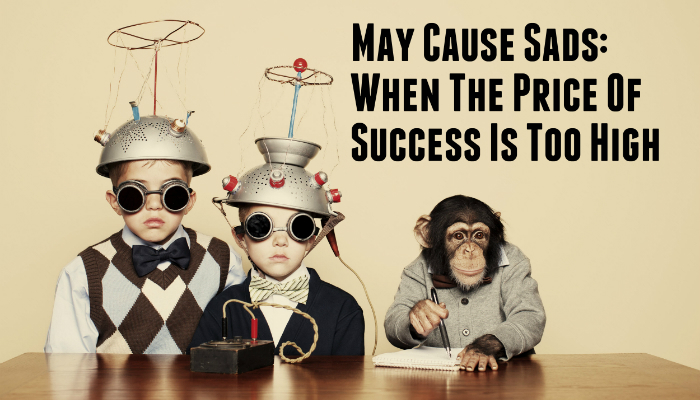
It’s a familiar scene: the ambitious, young business person works determinedly at their laptop.
The desk that surrounds them is littered with empty Red Bull cans and coffee cups.
There they are, grinding it out, hustling, pushing. Meeting that deadline and hitting those numbers.
It’s such a commonplace occurrence that it hardly bears mention.
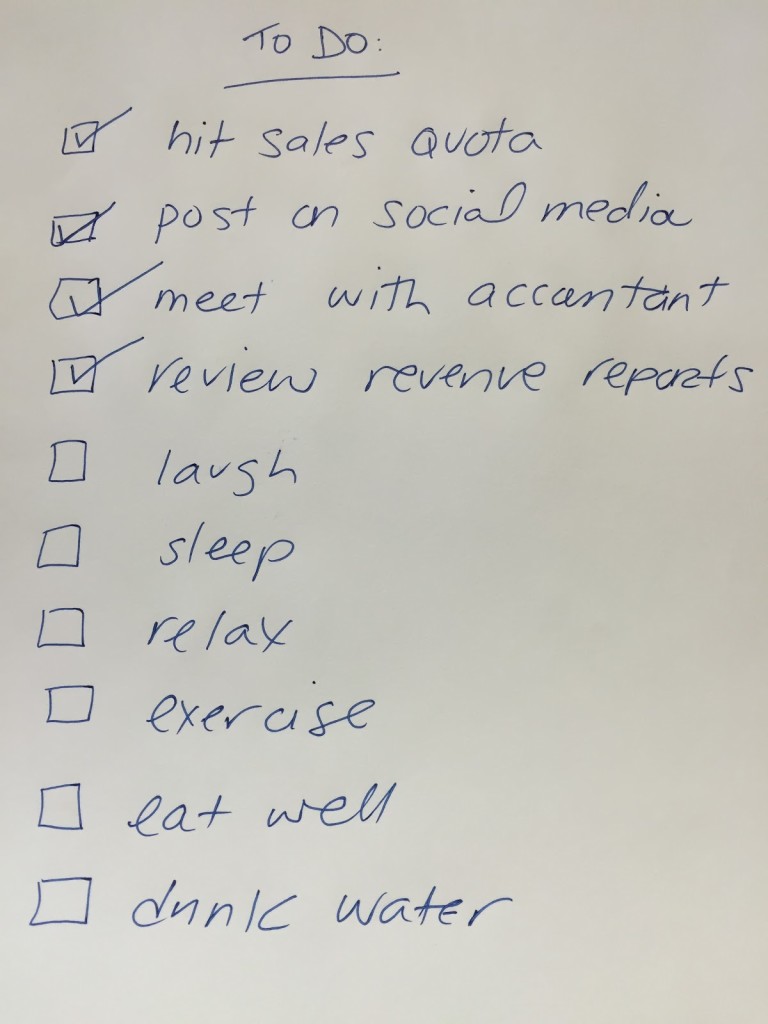
“Sacrifice for success” is such an accepted and glorified narrative. A close cousin to the beloved rags to riches story.
The sacrifices of many start up or even established business owners is well understood, and even expected — long working hours, not a lot of sleep, nonexistent social life, sporadic nutrition.
All to attain a future vision of success. A goal. A target.
More sales. Get the business funded. Triple the bottom line revenues.
And yet, often when the lofty goal is achieved, the feeling our hero experiences can be anticlimactic.
Instead of the much anticipated, soaring feeling of success, happiness and accomplishment, our hard working entrepreneur feels an empty disappointment; another hollow victory.
It’s confusing and even embarrassing to admit this — that the tremendous sacrifices have not produced the expected feeling of success or fulfillment.
The assumed happiness and feeling of satisfaction that would result from the achievement did not in fact appear.
This can be so embarrassing that many of us push it away. I must have done it wrong, somehow.
The next ambition will produce the feeling of satisfaction, it’s decided. It must. So we immediately set our sights on the next horizon and trudge ever forward.
And our hero continues on. The years go by and she does succeed. From the outside it looks like she has everything she needs to feel happy and fulfilled.
But because she doesn’t, she pushes harder, on to the next glittering success.
The continuous, habitual sacrifice of the present moment’s happiness and wellbeing for some future achievement can be a dangerous habit.
If happiness and fulfilment is only available in the future, conditionally, than it may never arrive.
This is how midlife crises occur.
Suddenly you wake up one day and realize you’ve sacrificed too much for your outer success.
Playing by the rules has you winning someone else’s game.
Maybe the wake up call occurs due to a health concern — burnout or cancer.
Or maybe there is no wake up call. And instead, your regrets join those documented deathbed laments.
“I worked too much, I did what was expected of me instead of what I was true to my heart.”
The drive to continually achieve, whether it’s making ever increasing sums of money or hitting ever increasing growth targets, isn’t a bad thing.
What’s dangerous is that many of us can get caught in the cycle of striving without really examining whether or not the path we are walking is contributing to our fulfillment, joy, happiness and wellbeing.
Small decisions made each day make a life. Habits, including the habit of mindlessly striving, shape our days.
Honestly looking at how you’re living your life — the life you created for yourself — can be frightening.
I’ve heard whispered confessions from many clients…
- “I haven’t taken a vacation in over five years”
- “I don’t have time to eat breakfast”
- “I can’t actually work any harder than I am without getting sick”
These truths may be indicators of future regret…
The choice seems to be happy now or successful later- and that’s simply not true. You can have both. But you have to choose it.
After all, didn’t you start your business to be the author of your own destiny? To make your own rules?
Tell me…
Are you sacrificing too much?
What are you working so hard for ?
Do you find yourself constantly chasing the next accomplishment?
How Doing Good is Increasing Profits for Business
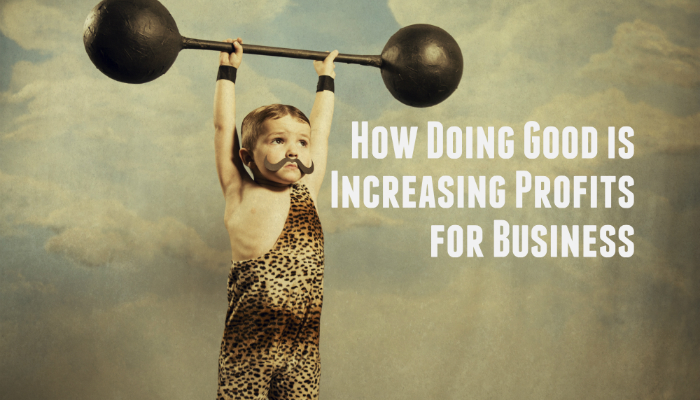 The first rule of business is make money.
The first rule of business is make money.
Whether it’s donating a certain percentage of profits to charity, organizing staff volunteering events or committing to being “green”, doing good doesn’t always make the high priority list for busy entrepreneurs.
Business owners focus on ensuring profits are good and operations are going smoothly before considering any altruistic programs.
This is called a transactional business model and it’s a common way of doing business. Essentially, someone buys a product or service from you and they give you money for it, and that is it.
But studies are showing that transactional businesses are facing a growing disadvantage.
According to a survey by Goodmustgrow.com 30% of respondents said that they expect to increase the amount of goods and services they buy from socially-responsible companies and 60% of people said that buying goods from socially-responsible companies is important to them.
We can see sales of up to 10% more by having a seal at the bottom of your website that says, “hey, a certain percentage of these sales are going to charity.”
The world is getting smaller, and we are all feeling the impact of things like environmental disasters, refugees, wars etc. and it’s becoming more and more important from both a fiscally and an ethically responsible perspective to make sure that your business is a force for good.
The alternative to a transactional business model is a transformational business model.
A great example of a transformational business is Tom’s Shoes, they’ve got what’s called a triple bottom line. That is, impact, amount of people served, as well as profits. If you’re not familiar with Tom’s Shoes, every time you buy a pair of shoes they give a pair of shoes to a child in need.
I’m asking you now, how do you think that you could use your business as a force for good in the world, and turn it into a transformational instead of a transactional business?
I’d love to hear your thoughts. If you like this video/blog post please “like” it, and consider sharing it with your network.
This Mindset Shifting Practice Created Business Breakthroughs For Me and Will For You Too!
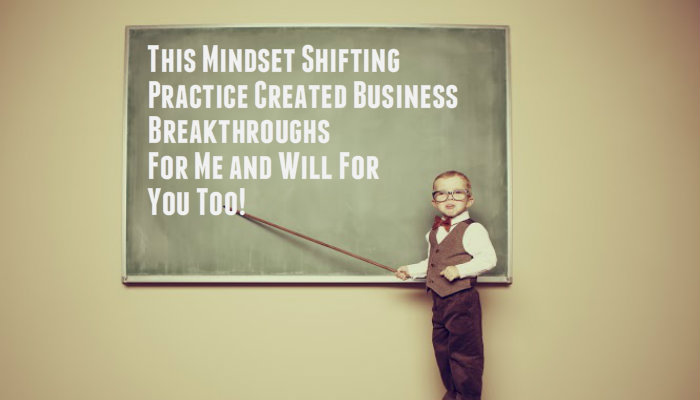 Hey folks, Laurel Anne Stark here and today I wanted share with you a new tactic I learned recently that helped me generate absolutely incredible amazing results in my business.
Hey folks, Laurel Anne Stark here and today I wanted share with you a new tactic I learned recently that helped me generate absolutely incredible amazing results in my business.
This is a bit of a departure from what I normally talk about, usually I talk about the external game, like the tactical things you can do to market your business online so you get better results.
And that’s not what I am sharing today, and I’ll tell you why.
Here’s what happened….
Everything’s great in my business. I’ve got lots of clients. I love them, they love me, everybody’s happy, making money. I can take time off. I’m not working 60, 80-hour weeks anymore, so that’s great, but what was happening is I was waking up every morning, and I was feeling kind of stressed out, nervous, like I’m not going to be able to get anything done, and who do I think I am,and I should be farther ahead by now, and I’m not going to be able to take as much vacation as I want, and I should be making more money, and blah blah blah blahblah, all this garbage in my head.
It was happening for months, and I was getting kind of bummed out because the results in my business were being impacted by this constant criticism, essentially, inside my head.
I knew the value of strategic planning, and thinking things out, and being very cerebral, but when it comes to the part of the brain that you don’t really control, that subconscious place that tries to keep you safe and comfortable, I didn’t really know how to manipulate that area of the brain, until now!
I’ve never had something be so effective. And I have all my marketing systems set up. I have my sales funnel, I have my social media, blah blah blah. I’ve worked and refined that stuff over the last 13 years so it’s working and I’m getting new leads all the time, everything’s great, but with the shift in mindset that was created by repeating these affirmations, I was able to increase my confidence, I was way more productive because I wasn’t stressed all the time, I woke up happy, and I was able to generate substantially more revenue in a substantially shorter amount of time than I ever have in my entire career, and I really do attribute a lot of it to the inner work that I’ve been doing.
I thought to myself, oh my gosh, this is amazing. I’m going to be able to take off so
much time this summer, which is amazing for me. Summer in Canada is very, very
short, so you definitely want to get it while it’s here, and I thought, I have to share
this with people. I really, really have to share this with people.
Here’s what I did for eight weeks. I repeated the following affirmations to myself every single morning before I started work.
I recommend you do the following and see what kind of results you get in your business, and please share with me, I’m so excited to hear how this works for you.
Simply repeat these out loud to yourself, and you’ll reprogram the inner critic part of your brain to be wired for success!
I release the need to be perfect, I know making mistakes is part of being successful.
I’m in the process of creating business of my dreams.
My best is good enough.
There is always enough time.
I am beautiful.
I love coming up with creative ways to provide value for my clients.
I’m learning how to be more effective marketing my business every single day.
I am unique and valued for who I am.
I’m making great progress every single day.
I ask for help when I need it.
I’m in the process of achieving my financial goals.
I am desired and people want to work with me.
I love marketing.
I provide tremendous value to my clients.
I’m getting better at my business everyday.
I attract the right clients at the right time.
My time is valuable and I’m okay with saying no.
I deserve to be financially free.
It’s safe for me to go offline and take vacations, I trust that everything will be just fine while I’m gone.
I’m okay with being outside of my comfort zone.
I release any self-limiting beliefs about my income potential.
It’s okay to make more money than my parents.
I’m doing important work in the world.
I will make my money goal.
I take the time to be present during my day.
I eat healthy foods that nourish me.
I say no when it doesn’t feel right.
I’m really proud of my progress.
I provide value and people want to hear from me.
I take control of my schedule and prioritize my time effectively.
I’m learning how to use technology to benefit myself and my business.
I accept that fear is part of growth.
I’m committed to getting my work done.
I take breaks when I need them.
I’m going to rock it today.
Those are your affirmations.
Again, I recommend that you check this out and try doing it every single day for even 21 days and see how you feel… please share your experiences with me!
If you like this, please like it and consider sharing with anyone you feel would benefit from this practice.
The F Word that is Critical To Your Success
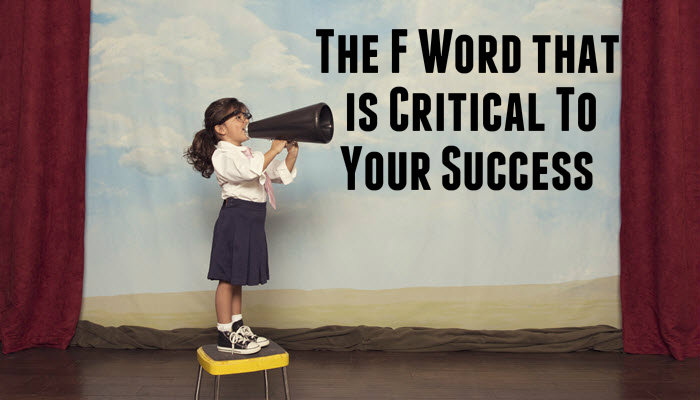
I know what you’re thinking and I’m not talking about swearing, ( although that would be fun. )
I’m talking to you about the word Failure.
There’s two huge myths about failure that we are going to bust here and now, today to make you feel better about it.
I’ll also share how to deal with it, and why it’s actually a requirement for success in both your business and your personal life. And, for the first time in public, two of my biggest failures in business.
One huge myth about failure is that if you make a mistake or you screw up or you fail that you are somehow doing it wrong, and that you shouldn’t make mistakes.
I’m here to tell you that that is not true.
Actually, failure is a requirement for success. To get to where you’re going, you need to become a different person.
In order to become a different person, you need to try, and trying includes failure.
It simply does.
It’s actually a requirement for success, so the more that you’re failing, the faster you’re growing, and the closer you are getting to becoming the person you intend to be, and grow the business that you’re trying to create.
For every failure, instead of thinking to yourself, “Oh, I screwed up. This is awful.”
I want you to give yourself a huge pat on the back because you are growing and progressing as a human being, so failure is not bad, it is awesome.
The second myth about failure is that not everybody does it.
I’m here to tell you today that, indeed, no matter what people look like on the internet, how perfect and together and successful, behind the scenes, it’s much, much different.
I am going to share with you two of my personal biggest failures in business. Just so you know, you are not alone.
The first one maybe would have made a lot of people give up, and it was the very first day I became an entrepreneur.
I made Partner at a digital marketing company. I was 23. I was so excited. I signed on that dotted line. I did not get a Lawyer to look at the paperwork. I did not get an Accountant to look at the bank statements.
As a result, I signed up for $80,000 worth of debt on my very first day of being an Entrepreneur. That’s a pretty big failure! I had no idea what I was doing, and when I heard that I owed now $80,000, I was a little bit distressed certainly, but I did not let that stop me, and I kept going, and I paid off that debt, and 13 years later, here I am today.
You know what? I don’t regret it, because it just highlights and underlines the importance of not skimping on due diligence.
I learned a really important lesson that Lawyers and Accountants are there for a reason, and you should engage them, and pay them what they’re worth, because they can save you a ton of money.
The second biggest mistake that I think I made in business, and it’s debatable of course, is a bunch of years ago, I decided I was going to start a software outsourcing firm.
One of my awesome Software Engineers was moving back to Pakistan, and because labor is plentiful, and at lesser cost than here in North America, we thought we’d take advantage of that situation, and we would start the software outsourcing firm. He would handle all the people in Pakistan. I would generate clients here in North America, and we would work together and make a butt load of money.
Here’s what happened….
We created the brand, the logo, the website. We had a list of target clients. I spent so much time and so much money on getting this business up off the ground. I did not stop to consider, would I actually enjoy it? Would I like this business? Did it fulfill a greater purpose in my life? Is it something that made my heart sing?
While all that stuff sounds really fruity, you know, money is not the only motivator.
You need something bigger. You need a bigger why to get out of bed in the morning. It was only on the very first day that I had to pick up the phone and make that very first cold call, did I realize, I don’t want to do this!
What an expensive mistake. I had to let my partner down in Pakistan. I had spent all this money on marketing collateral and tons of time, and again, a big lesson that I learned was that you need to have a big why in your business. You need to have a mission. Otherwise, it’s not going to work.
I wanted to share that mistake with you as well, because that was a big one. A big doozy!.
You know what? It was just a really, really expensive lesson.
Another way to sort of mitigate mistakes or go through them faster is to have a mentor or a community in which you participate of other entrepreneurs, so you can learn from their mistakes, like hopefully you’re learning from mine today, to reduce your learning curve.
The very last thing I’ll leave you with is a motivational quote by Teddy Roosevelt. It’s my absolute favorite.
“It is not the critic that counts. Not the man who points out how the strong man stumbles or where the doer of deeds could have done them better. The credit belongs to the man who is actually in the arena, whose face is marred by dust and sweat and blood, who strives valiantly, who errs, who comes up short again and again, because there is no effort without error and shortcoming, but who does actually strive to do the deeds, who knows great enthusiasms, the great devotions. Who spends himself in a worthy cause, who at the best knows the triumph of high achievement, and who at the worst, if he fails, at least fails while daring greatly.” That’s Teddy Roosevelt.
If you like this video, please Like it, and consider sharing with your network. Thank you for watching.









